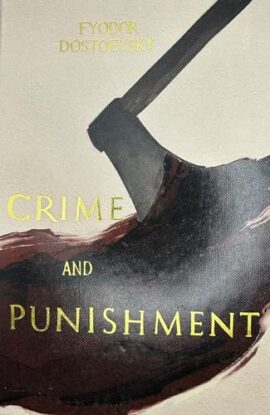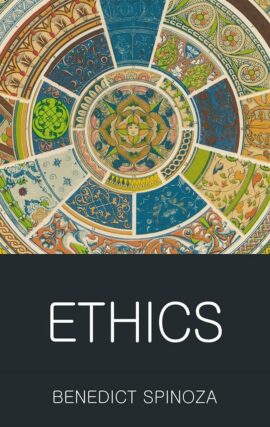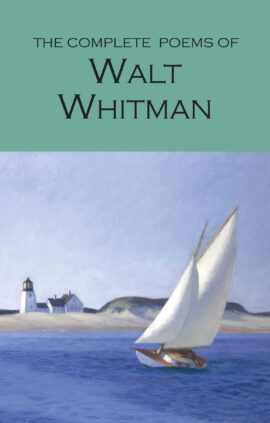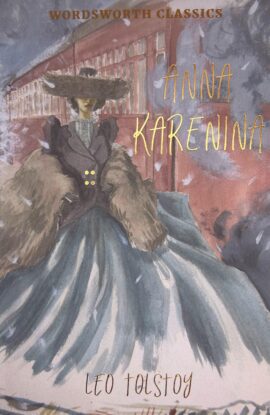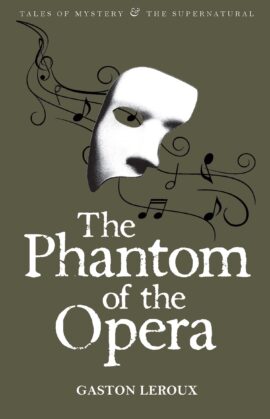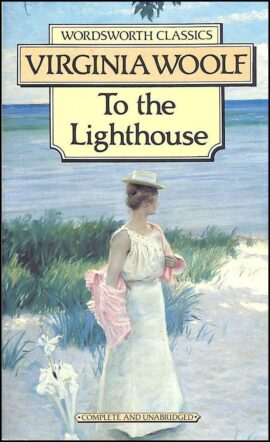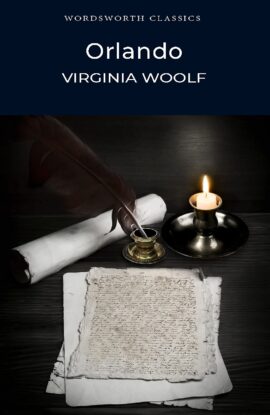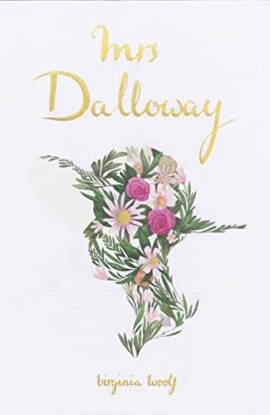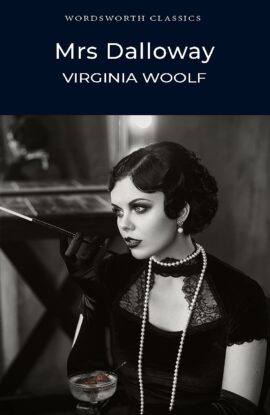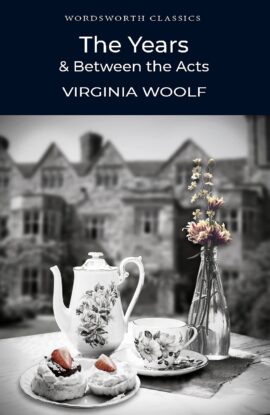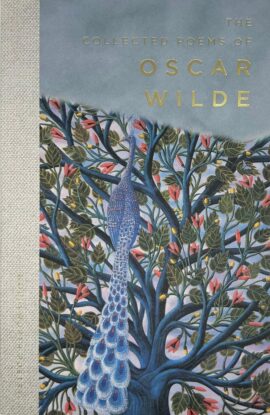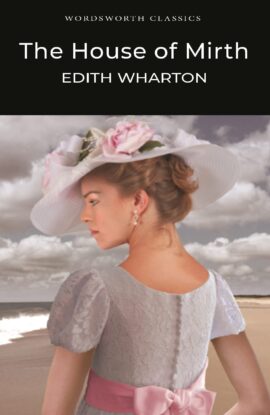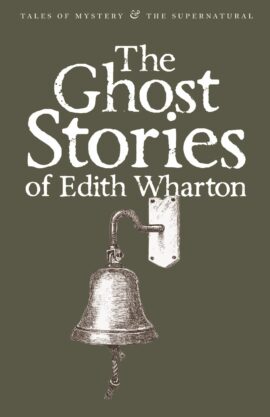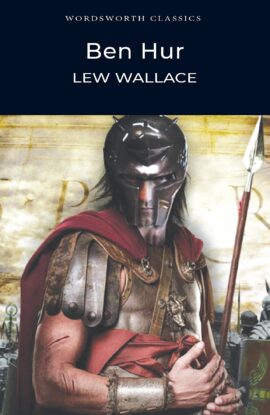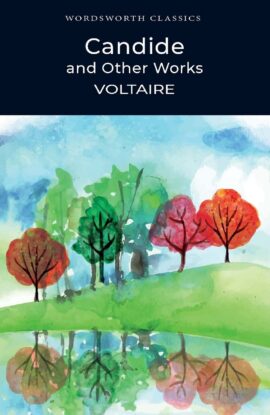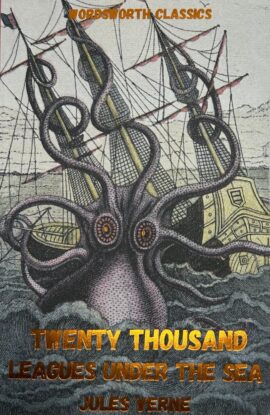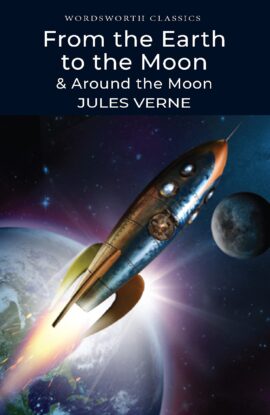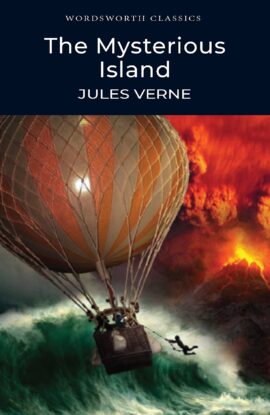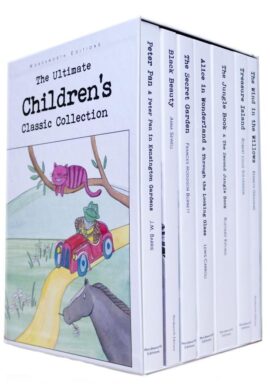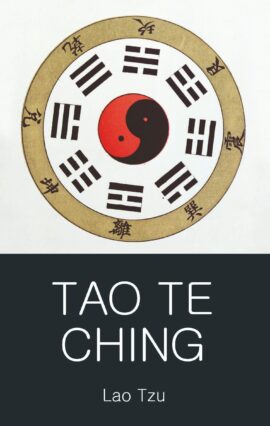Affichage de 1–25 sur 191 résultatsTrié par popularité
Crime and Punishment (Wordsworth Collector’s Editions) (English and Russian Edition)
Crime and Punishment is one of the greatest and most readable novels ever written. From the beginning we are locked into the frenzied consciousness of Raskolnikov who, against his better instincts, is inexorably drawn to commit a brutal double murder. From that moment on, we share his conflicting feelings of self-loathing and pride, of contempt for and need of others, and of terrible despair and hope of redemption: and, in a remarkable transformation of the detective novel, we follow his agonized efforts to probe and confront both his own motives for, and the consequences of, his crime. The result is a tragic novel built out of a series of supremely dramatic scenes that illuminate the eternal conflicts at the heart of human existence: most especially our desire for self-expression and self-fulfillment, as against the constraints of morality and human laws: and our agonized awareness of the world's harsh injustices and of our own mortality, as against the mysteries of divine justice and immortality."Pain and suffering are always inevitable for a large intelligence and a deep heart..."
Ethics (Wordsworth Classics of World Literature)
Ethics by Benedict de Spinoza demonstrated in Geometrical Order shows us the reality behind this enigmatic figure. First published by his friends after his premature death at the age of forty-four, the Ethics uses the methods of Euclid to describe a single entity, properly called both 'God' and 'Nature', of which mind and matter are two manifestations. From this follow, in ways that are strikingly modern, the identity of mind and body, the necessary causation of events and actions, and the illusory nature of free will.
The Divine Comedy (Wordsworth Classics of World Literature)
The Divine Comedy: Dante Alighieri (1265-1321) is one of the most important and innovative figures of the European Middle Ages. Writing his Comedy (the epithet Divine was added by later admirers) in exile from his native Florence, he aimed to address a world gone astray both morally and politically. At the same time, he sought to push back the restrictive rules which traditionally governed writing in the Italian vernacular, to produce a radically new and all-encompassing work. The Comedy tells of the journey of a character who is at one and the same time both Dante himself and Everyman through the three realms of the Christian afterlife: Hell, Purgatory and Heaven. He presents a vision of the afterlife which is strikingly original in its conception, with a complex architecture and a coherent structure. On this journey Dante's protagonist - and his reader - meet characters who are variously noble, grotesque, beguiling, fearful, ridiculous, admirable, horrific and tender, and through them he is shown the consequences of sin, repentance and virtue, as he learns to avoid Hell and, through cleansing in Purgatory, to taste the joys of Heaven.
WHITMAN POETICAL WORKS – WWC WORDSWORTH POETRY LIBRARY
With an Introduction and Bibliography by Stephen Matterson, Trinity College, Dublin.Walt Whitman's verse gave the poetry of America a distinctive national voice. It reflects the unique vitality of the new nation, the vastness of the land and the emergence of a sometimes troubled consciousness, communicated in language and idiom regarded by many at the time as shocking.Whitman's poems are organic and free flowing, fit into no previously defined genre and skilfully combine autobiographical, sociological and religious themes with lyrical sensuality. His verse is a fitting celebration of a new breed of American and includes 'Song of Myself', 'Crossing Brooklyn Ferry', the celebratory 'Passage to India', and his fine elegy for the assassinated President Lincoln, 'When Lilacs Last in the Dooryard Bloom'd'.
Anna Karenina (Wordsworth Classics)
Anna Karenina by Leo Tolstoy. Anna Karenina is one of the most loved and memorable heroines of literature. Her overwhelming charm dominates a novel of unparalleled richness and density. Tolstoy considered this book to be his first real attempt at a novel form, and it addresses the very nature of society at all levels,- of destiny, death, human relationships and the irreconcilable contradictions of existence. It ends tragically, and there is much that evokes despair, yet set beside this is an abounding joy in life's many ephemeral pleasures, and a profusion of comic relief.
Phantom of the Opera (Tales of Mystery & the Supernatural)
Phantom of the Opera by Gaston Leroux. With an Introduction by David Stuart Davies ... the shadow turned round: and I saw a terrible death s-head, which darted a look at me from a pair of scorching eyes. I felt as if I were face to face with Satan... Erik, the Phantom of the Paris Opera House, is one of the great icons of horror literature. This tormented and disfigured creature has made his home in the labyrinthine cellars of this opulent building where he can indulge in his great passion for music, which is a substitute for the love and emotion denied him because of his ghastly appearance. It is in the Opera House that he encounters Christine Daaé whom he trains in secret to become a great singer. Erik s passionate obsession with a beautiful woman beyond his reach is doomed and leads to the dramatic tragic finale. Gaston Leroux s novel is a marvellous blend of detective story, romance and spine-tingling terror which has fascinated readers ever since the work was first published.
Faust – A Tragedy in Two Parts and the Urfaust (Wordsworth Classics of World Literature)
Goethe's Faust is a classic of European literature. Based on the fable of the man who traded his soul for superhuman powers and knowledge, it became the life's work of Germany's greatest poet. Beginning with an intriguing wager between God and Satan, it charts the life of a deeply flawed individual, his struggle against the nihilism of his diabolical companion Mephistopheles. Part One presents Faust's pact with the Devil and the harrowing tragedy of his love affair with the young Gretchen. Part Two shows Faust's experience in the world of public affairs, including his encounter with Helen of Troy, the emblem of classical beauty and culture. The whole is a symbolic and panoramic commentary on the human condition and on modern European history and civilisation. This new translation of both parts of Faust preserves the poetic character of the original, its tragic pathos and hilarious comedy. In addition, John Williams has translated the Urfaust, a fascinating glimpse into the young Goethe's imagination, and a selection from the draft scenarios for the Walpurgis Night witches' sabbath - material so ribald and blasphemous that Goethe did not dare publish it.
To the Lighthouse (Wordsworth Classics)
With an Introduction and Notes by Dr Nicola Bradbury, University of Reading.This simple and haunting story captures the transcience of life and its surrounding emotions.To the Lighthouse is the most autobiographical of Virginia Woolf's novels. It is based on her own early experiences, and while it touches on childhood and children's perceptions and desires, it is at its most trenchant when exploring adult relationships, marriage and the changing class-structure in the period spanning the Great War.
Orlando (Wordsworth Classics)
With an Introduction and Notes by Merry M. Pawlowski, Professor and Chair, Department of English, California State University, Bakersfield.Virginia Woolf's Orlando 'The longest and most charming love letter in literature', playfully constructs the figure of Orlando as the fictional embodiment of Woolf's close friend and lover, Vita Sackville-West. Spanning three centuries, the novel opens as Orlando, a young nobleman in Elizabeth's England, awaits a visit from the Queen and traces his experience with first love as England under James I lies locked in the embrace of the Great Frost.At the midpoint of the novel, Orlando, now an ambassador in Costantinople, awakes to find that he is a woman, and the novel indulges in farce and irony to consider the roles of women in the 18th and 19th centuries.As the novel ends in 1928, a year consonant with full suffrage for women. Orlando, now a wife and mother, stands poised at the brink of a future that holds new hope and promise for women.
Mrs Dalloway (Wordsworth Collector’s Editions)
Mrs Dalloway by Virginia WoolfVirginia Woolf's singular technique in Mrs Dalloway heralds a break with the traditional novel form and reflects a genuine humanity and a concern with the experiences that both enrich and stultify existence.Society hostess, Clarissa Dalloway is giving a party. Her thoughts and sensations on that one day, and the interior monologues of others whose lives are interwoven with hers gradually reveal the characters of the central protagonists. Clarissa's life is touched by tragedy as the events in her day run parallel to those of Septimus Warren Smith, whose madness escalates as his life draws toward inevitable suicide.
Mrs Dalloway
Virginia Woolf's singular technique in Mrs Dalloway heralds a break with the traditional novel form and reflects a genuine humanity and a concern with the experiences that both enrich and stultify existence. Society hostess, Clarissa Dalloway is giving a party. Her thoughts and sensations on that one day, and the interior monologues of others whose lives are interwoven with hers gradually reveal the characters of the central protagonists. Clarissa's life is touched by tragedy as the events in her day run parallel to those of Septimus Warren Smith, whose madness escalates as his life draws toward inevitable suicide.
The Years / Between the Acts (Wordsworth Classics)
This volume brings together Virginia Woolf's last two novels, The Years (1937) which traces the lives of members of a dispersed middle-class family between 1880 and 1937, and Between the Acts (1941), an account of a village pageant in the summer preceding the Second World War which successfully interweaves comedy, satire and disturbing observation.Rewriting the traditional family saga and the pageant, these unsettling novels provide extraordinary critiques of Englishness and English identity while pursuing compelling existentialist and psychological themes such as the nature of time, memory, personal relationships and sexual desire. Their tightly constructed narratives enable the reader to experience the fragmented lives of their characters and the difficulties that they have in communicating with each other and even understanding themselves. Read together, these novels illuminate each other in ways that will engage both the student and the general reader.
A Room of One’s Own & the Voyage Out (Wordsworth Classics)
A Room of One's Own (1929) has become a classic feminist essay and perhaps Virginia Woolf's best known work: The Voyage Out (1915) is highly significant as her first novel. Both focus on the place of women within the power structures of modern society.The essay lays bare the woman artist's struggle for a voice, since throughout history she has been denied the social and economic independence assumed by men. Woolf's prescription is clear: if a woman is to find creative expression equal to a man's, she must have an independent income, and a room of her own. This is both an acute analysis and a spirited rallying cry: it remains surprisingly resonant and relevant in the 21st century.The novel explores these issues more personally, through the character of Rachel Vinrace, a young woman whose 'voyage out' to South America opens up powerful encounters with her fellow-travellers, men and women. As she begins to understand her place in the world, she finds the happiness of love, but also sees its brute power. Woolf has a sharp eye for the comedy of English manners in a foreign milieu: but the final undertow of the novel is tragic as, in some of her finest writing, she calls up the essential isolation of the human spirit.
The Collected Poems of Oscar Wilde (Wordsworth Poetry Library)
With an Introduction, Notes and Bibliography by Anne Varty, Royal Holloway, University of London.Wilde, glamorous and notorious, more famous as a playwright or prisoner than as a poet, invites readers of his verse to meet an unknown and intimate figure. The poetry of his formative years includes the haunting elegy to his young sister and the grieving lyric at the death of his father. The religious drama of his romance with Rome is captured here, as well as its resolution in his renewed love of ancient Greece.He explores forbidden sexual desires, pays homage to the great theatre stars and poets of his day, observes cityscapes with impressionist intensity. His final masterpiece, 'The Ballad of Reading Gaol', tells the painful story of his own prison experience and calls for universal compassion.This edition of Wilde's verse presents the full range of his achievement as a poet.
The House of Mirth (Wordsworth Classics)
The House of Mirth by Edith Wharton. The House of Mirth tells the story of Lily Bart, aged 29, beautiful, impoverished and in need of a rich husband to safeguard her place in the social elite, and to support her expensive habits - her clothes, her charities and her gambling. Unwilling to marry without both love and money, Lily becomes vulnerable to the kind of gossip and slander which attach to a girl who has been on the marriage market for too long. Wharton charts the course of Lily's life, providing, along the way, a wider picture of a society in transition, a rapidly changing New York where the old certainties of manners, morals and family have disappeared and the individual has become an expendable commodity.
Ghost Stories of Edith Wharton (Tales of Mystery & the Supernatural)
Ghost Stories of Edith Wharton by Edith Wharton. Traumatised by ghost stories in her youth, Pulitzer Prize winning author Edith Wharton (1862 -1937) channelled her fear and obsession into creating a series of spine-tingling tales filled with spirits beyond the grave and other supernatural phenomena. While claiming not to believe in ghosts, paradoxically she did confess that she was frightened of them. Wharton imbues this potent irrational and imaginative fear into her ghostly fiction to great effect. In this unique collection of finely wrought tales Wharton demonstrates her mastery of the ghost story genre. Amongst the many supernatural treats within these pages you will encounter a married farmer bewitched by a dead girl: a ghostly bell which saves a woman's reputation: the weird spectral eyes which terrorise the midnight hours of an elderly aesthete: the haunted man who receives letters from his dead wife: and the frightening power of a doppelganger which foreshadows a terrible tragedy. Compelling, rich and strange, the ghost stories of Edith Wharton, like vintage wine, have matured and grown more potent with the passing years.
The Age of Innocence by Edith Wharton (Wordsworth Classics)
Ben Hur
Ben-Hur: A Tale of the Christ by Lew Wallace. An immediate best-seller on publication, Ben Hur remains a dazzling achievement by any standards. A thoroughly exhilarating tale of betrayal, revenge and salvation, it is the only novel that ranks with Uncle Tom's Cabin as a genuine American folk possession. Wallace writes with a freshness and immediacy that brings every action-packed scene to life and illuminates the geography, ethnology and customs of the ancient world.
Candide and Other Works (Wordsworth Classics)
With an Introduction and Notes by James Fowler, Senior Lecturer in French, University of Kent Voltaire is one of the three greatest French writers of the eighteenth century. He fought against religious persecution, bigotry and injustice throughout his life, and is one of the thinkers who prepared the way for the French Revolution. This volume contains: Zadig (1748), the story of a young man who becomes king of Babylon: Candide (1759), Voltaire's most famous tale of all: and (in a new translation by Editor James Fowler) The Ingenu (1767), in which the hero, raised by Huron Indians, discovers the ways of Europe. The heroes of these tales are young, handsome, talented, and naive. All three are animated by Voltaire's sparkling wit, but also by his dark satire of ancient regime society. The volume closes with a new translation of Nanine, Voltaire's three-act comedy which was seen, first as dangerously meritocratic, then as anti-revolutionary. The hero falls in love with a servant girl: but will he overcome society's prejudice and marry her?
Twenty Thousand Leagues Under the Sea
20,000 Leagues Under the Sea by Jules Verne. Twenty Thousand Leagues Under the Sea is a classic science fiction novel by French writer Jules Verne published in 1870. It tells the story of Captain Nemo and his submarine Nautilus, as seen from the perspective of Professor Pierre Aronnax after he, his servant Conseil, and Canadian whaler Ned Land wash up on their ship. On the Nautilus, the three embark on a journey which has them going all around the world, under the sea.
From the Earth to the Moon / Around the Moon (Wordsworth Classics)
With an Introduction and Notes by Alex Dolby. JULES VERNE (1828-1905) was internationally famous as the author of novels based on extraordinary voyages. His visionary use of new travel technologies inspired his readers to look to the industrial future rather than the remote past for their dreams of adventure. The popularity of his novels led directly to modern science fiction. In From the Earth to the Moon and Around the Moon, Jules Verne turned the ancient fantasy of space flight into a believable technological possibility an engineering dream for the industrial age. Directly inspired by Verne s story, enthusiasts worked successfully at overcoming the practical difficulties, and within a century, human beings did indeed fly to the Moon. Curiously, however, Verne is unlikely to have thought it possible that a manned projectile could actually be fired out of a giant cannon, rising higher than the Moon, swinging around it, and then landing safely back on Earth. He had used the science of
Museum Collection of Claude Monet
Around the World in Eighty Days (1873) relates the hair-raising journey made as a wager by the Victorian gentleman Phileas Fogg, who succeeds - but only just! - in circling the globe within eighty days. The dour Fogg's obsession with his timetable is complemented by the dynamism and versatility of his French manservant, Passepartout, whose talent for getting into scrapes brings colour and suspense to the race against time. Five Weeks in a Balloon (1863) was Verne's first novel. It documents an apocryphal jaunt across the continent of Africa in a hydrogen balloon designed by the omniscient, imperturbable and ever capable Dr Fergusson, the prototype of the Vernian adventurer.
The Mysterious Island (Wordsworth Classics)
The Mysterious Island by Jules Verne. With an Introduction by Alex Dolby Jules Verne (1828-1905) is internationally famous as the author of a distinctive series of adventure stories describing new travel technologies which opened up the world and provided means to escape from it. The collective enthusiasm of generations of readers of his extraordinary voyages was a key factor in the rise of modern science fiction. In The Mysterious Island a group of men escape imprisonment during the American Civil War by stealing a balloon. Blown across the world, they are air-wrecked on a remote desert island. In a manner reminiscent of Robinson Crusoe, the men apply their scientific knowledge and technical skill to exploit the island s bountiful resources, eventually constructing a sophisticated society in miniature. The book is also an intriguing mystery story, for the island has a secret...
The Ultimate Children’s Classic Collection (Wordsworth Box Sets)
The Ultimate Children's Classic Collection. The perfect gift for any book-lover, this box set contains eight of the best children's classics ever written Beautifully packaged in a ridged, matt-laminated slipcase with metallic detailing, complete with strikingly attractive, bespoke artwork, this would make an ideal Christmas present Includes:Alice in Wonderland 9781853261183The Wind in the Willows 9781853261220Treasure Island 9781853261039Black Beauty 9781853261091The Jungle Book 9781853261190The Secret Garden 9781853261046Peter Pan 9781853261206
Tao Te Ching (Wordsworth Classics of World Literature)
Tao Te Ching by Lao Tzu is the first great classic of the Chinese school of philosophy called Taoism. Within its pages is summed up a complete view of the cosmos and how human beings should respond to it. A profound mystical insight into the nature of things forms the basis for a humane morality and vision of political utopia. The ideas in this work constitute one of the main shaping forces behind Chinese spirituality, art and science, so much so that no understanding of Chinese civilisation is possible without a grasp of Taoism. This edition presents the authoritative translation by Arthur Waley, with a new Introduction reflecting recent developments in the interpretation of the work.

